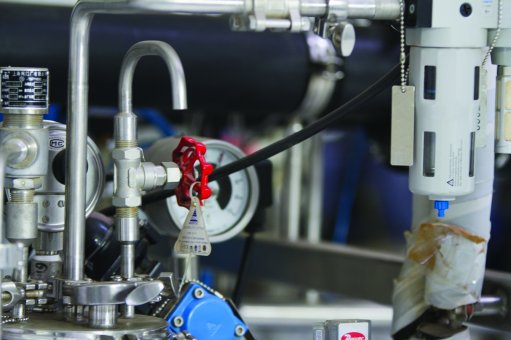
INDUSTRIAL INTERNET OF THINGS
Significant progress has been made in industry and commercial Internet of Things systems
Photo by: Duane Daws
Increasing industrial and large-scale Internet of Things (IoT) implementations worldwide are a result of more affordable cost structures, better machine learning, machine-to-machine communication, wireless communications and cloud systems that serve as platforms, says Dell South Africa sales and engineering manager Greg McDonald.
Low-cost and -power sensors, improved pricing of cloud and platform-as-a-service offerings, big data, analytics, and machine-to-machine systems indicate that a tipping point might soon be reached in the adoption of IoT systems, he adds.
“While the emergence of consumer IoT systems indicates how rapidly this technology has developed, it is in industry and commercial IoT where the real progress has been made. All the industrial systems of a company can be brought together, with contextual information and analytical output brought in from the data centre to inform decisions in real time.”
Dell used its new IoT gateway system and cloud-based platforms for its industrial IoT implementations in South Africa. Wireless grids provide on-site connectivity. The various machine protocols are automatically managed and translated to improve machine conversation. The company has provided IoT systems for wine and dairy farmers, factories, building systems management and telehealth services.
The system has been deployed for manufacturing-equipment control to optimise operations using information generated by the devices and sensors. This enables process managers to see conditions and make decisions in real time about tolerances, supplemented with historical process information and parameters, says McDonald.
In India, a dairy farm has increased its milk yields by about 35% by attaching radiofrequency identity tags to the cattle and tracking their movements in the fields. This information was used to send the cows that had eaten (identified by a stationary interval) into the dairy and return those that had not to the fields to graze.
A Cape wine farmer deployed the system and a range of sensors to monitor soil and atmospheric conditions across the vineyards. This real-time information helps to inform irrigation times and patterns, fertiliser use and soil treatment. A wireless network system was used to provide longer-range connectivity.
“The IoT gateway launch is key for us, and for the industrial and commercial solutions we can deploy globally and locally. The gateway filters information between the sensors and the data centre to send only changes in state, which reduces the use of network and data-centre resources and supports analytics processes.”
The gateway supports private cloud deployments, owing to intelligent transmission of data, but also allows for the broader use of public cloud service platforms for IoT systems in many industries and companies by managing the sensor networks on site and the updates to the cloud.
“There are risks and challenges associated with IoT systems. Security of data is important, especially in telehealth, where a person’s medical information is processed. There is also the business case, whether it can be achieved, and large data volumes and analytics complexity to grapple with,” highlights McDonald.
The next-generation Airbus A350 will have about 6 000 sensors generating about a 1 TB/d a day. A smart car could generate about 2 TB/h of data. Data volume and storage challenges are augmented by the lack of data and protocol standards.
However, the company’s IoT gateway covers about 95% of the standards used in the market, including sensor and industrial machine protocol, supervisory control and data acquisition protocol, as well as resource planning and data standards, and can manage these technology standards together.
“The sensors ‘talk’ to the gateway, which does edge analytics with point-changes reported to the data centre. This results in substantially less data transmitted, with on average only 3% to 5% of data generated by sensors uploaded. The Dell IoT gateway can support from
5 000 to 65 000 wired and wireless sensors on one gateway,” says McDonald.
Story highlights:
* Industrial and commercial Internet of Things deployments increasing, aided by improved cloud services, machine learning and analytics systems.
* The Dell IoT gateway manages a user’s sensor network, does edge analytics on the data and updates only relevant changes to the data centre